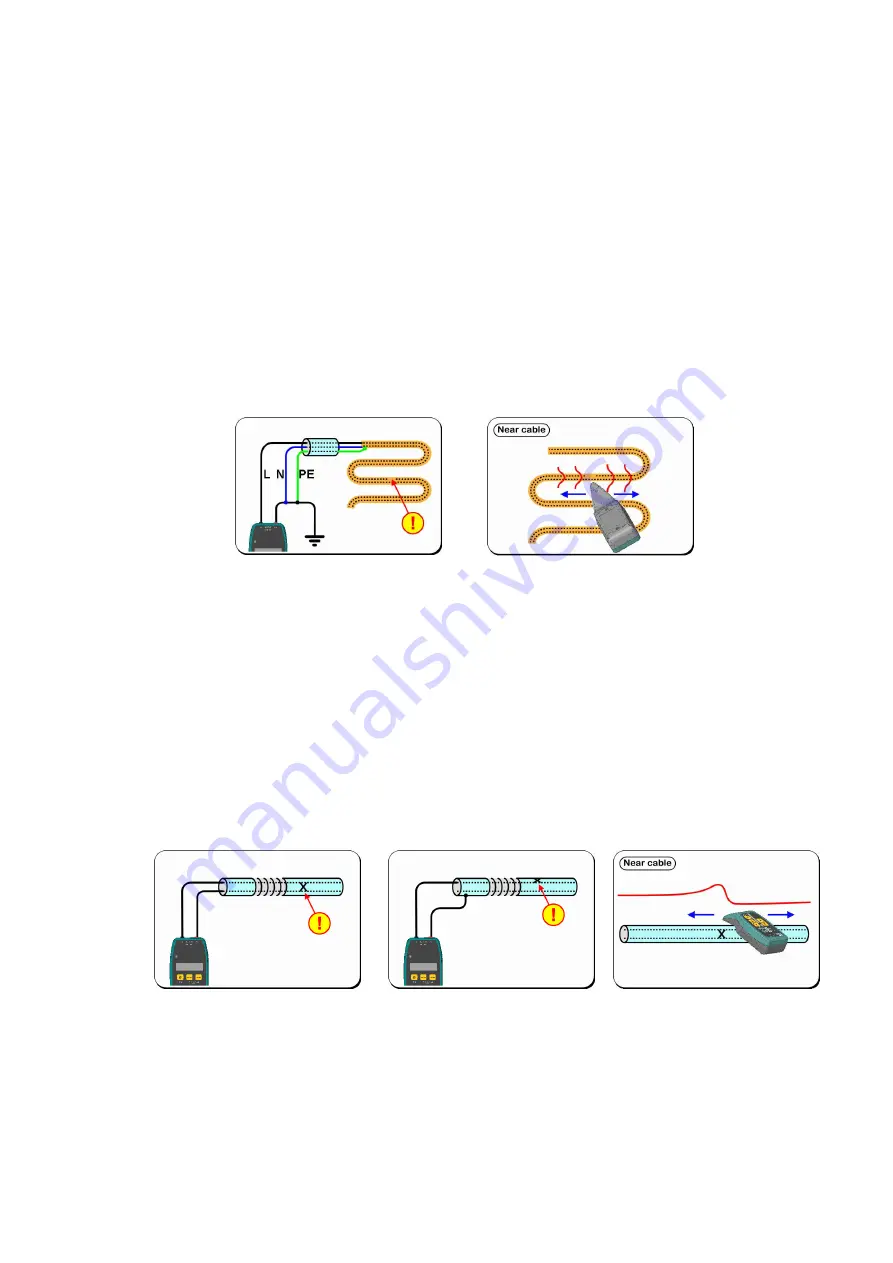
22
TM30 User Manual v. X1.0
Task: An open in a floor heating cable needs to be traced.
-
Several factors affect tracing an open in a heating cable, such as what cable type
is at hand, is the cable fully cut or just one wire and what kind of grounding
there is to concrete reinforcement. All these require carefulness while tracing
and yet it is possible that exact fault location can’t be determined.
-
When the cable route has been traced, connect one transmitter output terminal
to the cut wire. Connect the second output to the remaining two wires parallel
(in the figure shielding i.e. protective earth and the neutral wire) and connect
both of them also to a good grounding, preferably using a ground pick to ensure
best earth connection and minimum return current interference.
-
Check transmitter output current level: the higher current, the further is the cut
fault from the transmitter.
-
Choose
Near cable
mode with receiver. Again, use the receiver upside down, so
that its nose topside groove marked spot is close to the floor.
-
Monitor signal strength along the cable route. In this case signal is typically weak
and no minimum can be detected. At fault spot signal gets even weaker.
7.6 Tracing cable faults
7.6.1 Location of a short circuit fault
Task: Cable has a short circuit fault which location needs to be traced.
-
Connect transmitter between the
shorted
wires of the cable.
-
Choose
Near cable
mode with receiver. Monitor signal strength around the
cable surface. At fault spot signal gets stronger and then quickly disappears.
-
Low-ohmic short-circuit faults are easier to find. Shorts, which are caused by
water in a cable, are harder to find and result depends on how wet the cable is.
-
Ground leaks and shorts or shorts from wires to cable jacket are traced similarly.






































